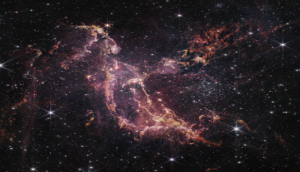
On Thursday, after an international team of astrophysicists announced that they had detected the gravitational waves first proposed by Albert Einstein, scientists at Pune's Inter-University Centre of Astronomy and Astrophysics (USCAA) cheered Professor Sanjeev Dhurandhar, a man who had been focused on gravitational waves 30 years before the world began to believe they could be detected, reports The Indian Express.
In the 1980s, Dhurandhar had been the joke of the international scientific community when he shared his ideas and theories regarding the detection of gravitational waves. Now he is one of the 1,000 international scientists whose work on the waves led to what they called the scientific breakthrough of the century.
Former director of IUCCA Professor Jayant Narlikar, said: "Those were the days when everyone was talking about electromagnetic waves and here was this young man talking about theories and experiments related to gravitational waves."
He added: "In the 1980s, when this remarkable individual had proposed a model with a theoretical backup to explore gravitational waves, Dhurandhar was told by senior colleagues that he had no credibility."
Another former director of the IUCCA, Ajit Kembhavi, said that Dhurandhar never gave up his ideas, but instead trained students in the area, many of whom are now working with gravitational wave groups around the world that have been involved in this discovery.
Current director of IUCAA Professor Somak Raychaudhury said: "I still remember how in the 1980s people at Oxford and Cambridge used to scorn Dhurandhar and his group. But today 90 per cent of the researchers abroad working on gravitation waves have been his students and are now heading teams that have led to this pathbreaking discovery."
Dhurandhar is modest about his accomplishments though. "It was only natural not to believe," he said. "We did not have enough technology 25 years ago to detect such waves. So I do not really blame people who did not believe us. All I can say is that I am overwhelmed. This is such good science - a new discipline of physics - I say."
Dhurandhar's group at IUCAA developed techniques to detect weak signals that would eventually help detect gravitational waves. In the early years of the Laser Interferometer Gravitational-Wave Observatory (LIGO), Dhurandhar led the solo Indian group for a decade.
Some 61 scientists from CMI Chennai, ICTS-TIFR Bengaluru, IISER-Kolkata, IISER-Trivandrum, IIT Gandhinagar, IPR Gandhinagar, IUCAA Pune, RRCAT Indore and TIFR Mumbai were involved in the Indian Initiative in Gravitational-Wave Observations (IndIGO), set up in 2009. Thirty-five scientists from these institutions had written in the discovery paper, which included the theoretical work combining black holes and gravitational waves published by CV Vishveshwara in 1970.







![BJP's Kapil Mishra recreates Shankar Mahadevan’s ‘Breathless’ song to highlight Delhi pollution [WATCH] BJP's Kapil Mishra recreates Shankar Mahadevan’s ‘Breathless’ song to highlight Delhi pollution [WATCH]](https://images.catchnews.com/upload/2022/11/03/kapil-mishra_240884_300x172.png)

![Anupam Kher shares pictures of his toned body on 67th birthday [MUST SEE] Anupam Kher shares pictures of his toned body on 67th birthday [MUST SEE]](https://images.catchnews.com/upload/2022/03/07/Anupam_kher_231145_300x172.jpg)






